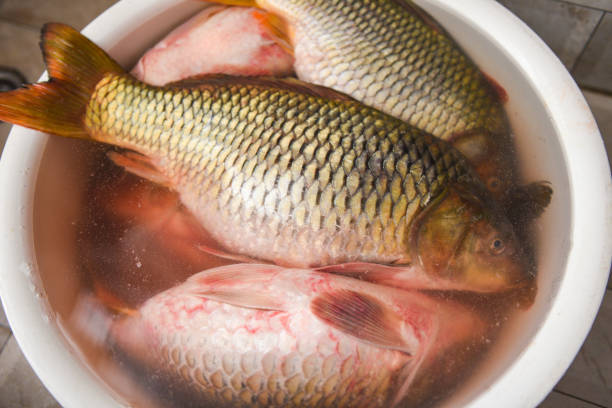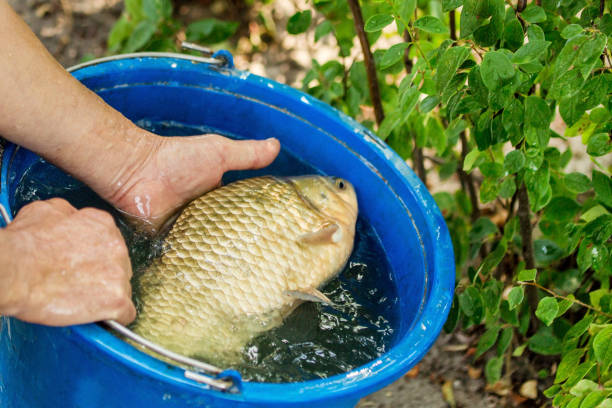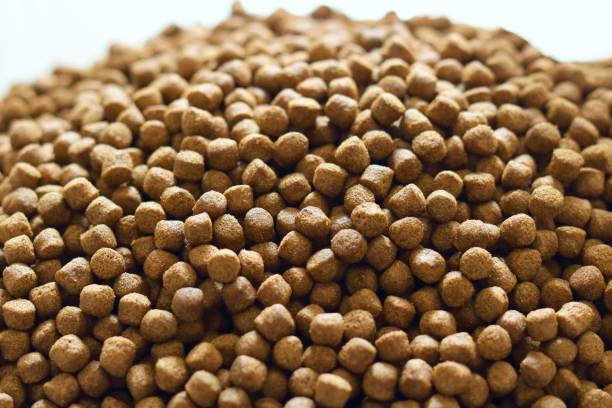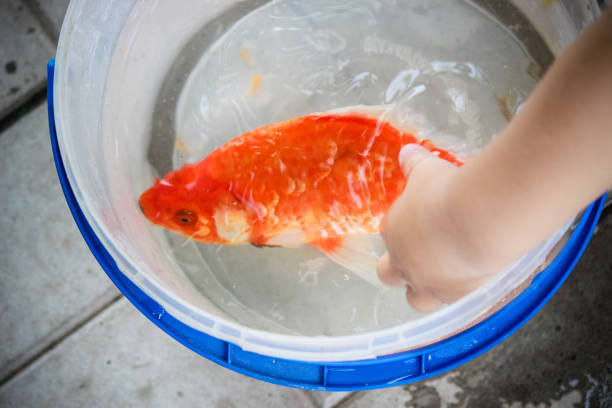Tips For Feeding Goldfish Flakes
Fancy goldfish require a well-balanced diet. They enjoy all manner of foods, including flakes, pellets, gel food and frozen foods.
When choosing a commercial food, look for one with a lower raw ash content (reduces pollution to the water) and low levels of filler ingredients such as corn, wheat flour and barley.
1. Keep the Tubs Fresh
Goldfish are hardy and will eat many things, including tropical fish food flakes, but that doesn’t mean they should be fed them. Flakes are often filled with more carbohydrates and less protein than is needed for Goldfish, which can lead to digestive problems and obesity in the fish.
Another option is to feed your Goldfish blanched vegetables, such as peas or zucchini. These are high in fiber and will help to supplement the protein in their gel food. Frozen foods such as mosquito larva, daphnia or brine shrimp are also easy to digest and a great source of protein.

When feeding gel or frozen foods, only give them as much as they can eat in a few seconds and then promptly remove the uneaten food. This will keep excess food from polluting the water. It is also a good idea to pre-soak dry food before feeding it to goldfish as this will prevent them from swallowing air bubbles that can cause swim bladder issues and buoyancy problems.
2. Keep the Feeders Clean
Most first time goldfish owners stick with flakes when they start feeding; they’re cheap, fuss free and meet the fish’s nourishment requirements. However, stale flakes can degrade quickly and can cause problems with water quality by polluting the aquarium. When feeding flakes, try to use fresh batches or even better, switch to gel foods.
These contain high-quality ingredients like krill, whole menhaden, and spirulina. They’re healthier for the fish than generic fish meal, which is basically ground up waste products from fish processing for human consumption, found in a lot of flakes and pellets on the market. They’re also less likely to cause buoyancy issues (that can be a problem with fancy goldfish) because they don’t float at the top of the aquarium like flakes do.

For an extra protein boost, try to feed your goldfish some frozen food a few times a week. Frozen foods are available at most pet stores or aquarium supplies and include brine shrimp, blood worms, and artemia, among others. Some people find that the fish eats more of these foods when they’re frozen rather than a dried flakes.
Another way to add extra nutrients is by feeding your goldfish some vegetables a few times a week. Some of the most popular options include boiled and crushed peas without the shell, (not from a can, as they often have additives) lightly steamed spinach and kale, and some pieces of zucchini.
3. Feed a Small Amount
If you’re going to use flakes, it’s best to do so sparingly. Overfeeding is a common cause of aquarium fish deaths, and goldfish are no exception. They need to spend the majority of their day “grazing” rather than eating big hunks of food at one time, so it’s better to offer smaller portions several times a day instead.
You can also try gel foods, which are nutrient rich and more like what goldfish would eat in the wild than standard flakes. These are usually homemade, but some pet stores carry frozen and freeze-dried alternatives that can be used as a supplement or as a complete diet. These options are good for goldfish who don’t respond well to pellets or flakes and can be helpful in preventing overfeeding.

When using flakes, it’s important to keep in mind that they may float on the surface of the water. This can cause your goldfish to gulp air along with the food, which is bad for their health. A good rule of thumb is to use a fingertip to measure the amount of food you can hold in your hand at one time, which will be about the size of a goldfish’s eyeball. This is an approximate ratio, but it’s very close to the truth and will help you avoid overfeeding.
You can also feed your goldfish fresh produce, such as ripe fruits and vegetables that have been well scrubbed (and cooked, if needed). Many people find this more convenient than keeping live food, but it’s important to be sure the fruit or vegetable doesn’t contain pesticides or other harmful chemicals.
4. Feed at the Right Time
Goldfish are omnivorous fish that require both protein and plant-based nutrients. They would naturally forage on plants in their natural habitat, but since they live in a tank they need to be provided with these foods as well. Traditional fish flakes are not suitable for goldfish as they contain fillers that have little nutritional value and can actually be harmful to them.
Feeding your goldfish a high quality staple diet and then supplementing with these foods will give them the nutrients they need to thrive. You can feed them vegetables such as steamed squash, courgette, spinach and peas (cook till soft, remove the shells, mash) which they love, along with fruit like orange peel and lettuce, and algae. Algae is a very important food for goldfish as it helps with digestion and aids bowel movement. Algae is also a great source of vitamins and minerals, as are many other foods that are easy for goldfish to digest such as hard boiled egg, cucumber, celery and broccoli.
Do not overfeed your goldfish as doing so can lead to a number of health problems such as fatty liver disease, dropsy and internal infections. If your goldfish is scouring the bottom of the tank for food this is a good sign that they are hungry, but if they constantly swim on the surface of the water it is an indication that they are overfeeding as they are burning too many calories to keep their body temperature stable.

